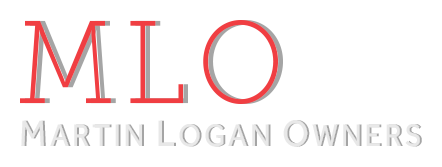Yeah, that's what my guess was. That's too bad. The Sanders speakers sold have active crossovers. He knows it's superior. Right now my Prodigies sound great, but I feel confident using active crossovers will improve the sound.I've been racking my brain trying to figure out how ML could use the high-level output from the owner's amp as an input for a DSP, which seemed impossible to me.
I couldn't find any info on the ML 11 but I found a PDF of the ML ESL 11a Owner's Manual, wherein the following excerpt explains [almost] everything:
"PoweredForce™ bass technology results in immense bass dynamics
and precision beyond the reach of traditional passive box systems.
Additionally, room correction and low-frequency equalization capa-
bilities allow precision calibration for optimal room integration.
Featuring an advanced crossover topology, each crossover uses preci-
sion audiophile-grade polypropylene capacitors, toroidal transformers,
and high-purity air-core and iron-core coils."
So now we know that the crossover is indeed passive, and only the bass band receives line-level DSP room correction, which is applied to the low-level signal feeding the built in bass amps.
The mids/highs receive no DSP correction.
Toroidal transformers would not typically be used in a passive crossover, which leads me to believe the setup works like this (no line level input from the owner's preamp required):
A passive crossover splits out the bass and mid/treble bands, and routes the mid/treble band power to the ESL panel.
The spit-out bass band then feeds into dual transformers which steps down the signal voltage (in two steps) to provide a line-level input for the DSP. The DSP then applies room correction and feeds the corrected singal to a pair of Class D bass amps powering the dual 8" woofers.
This setup likely improves any issues with bass/room interactions, and also provides plenty of power for bass output. This is a pretty goon compromise which allows using the owner's amp to power the panel.
However, this setup is less effective or desirable than a fully active setup, insofar as the already-amplified music signal is pushed through a power-robbing passive crossover, and there is no real-time tuning capablity (you have to live with what the passive crossover gives you).
How pronounced is the change when you switch over? The speakers end up getting a stronger signal also, so more volume?
Would running active crossover on the 11s or higher end up causing problems, since the woofer is already going through an active crossover? I guess you'd need to bypass it too?






